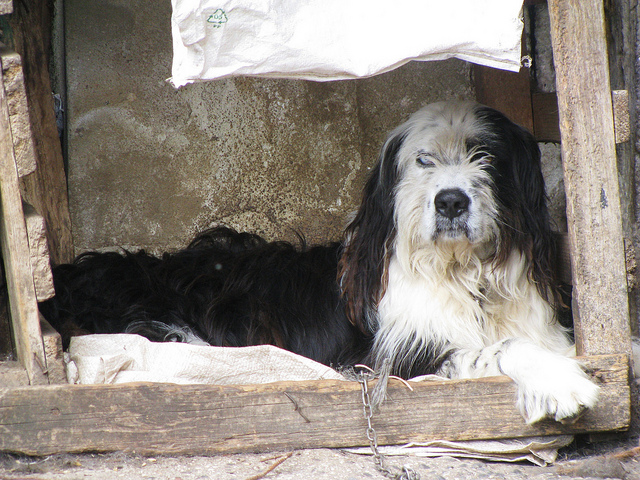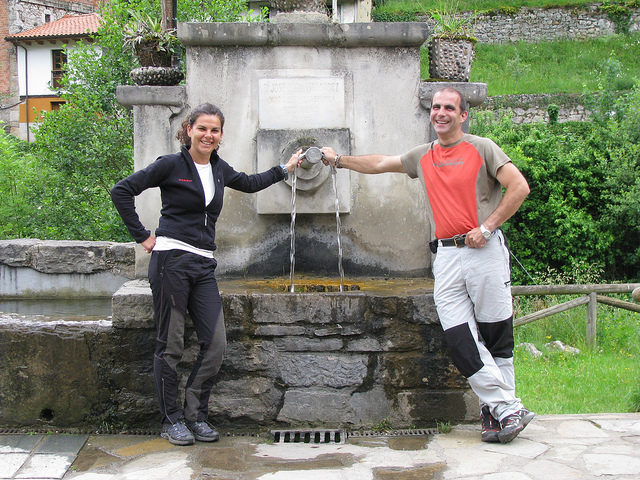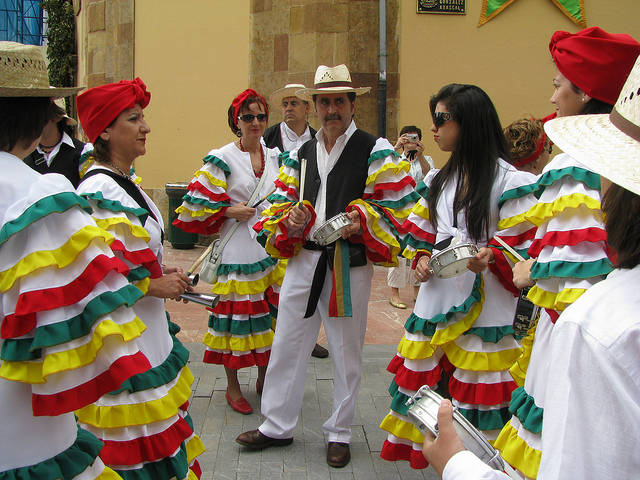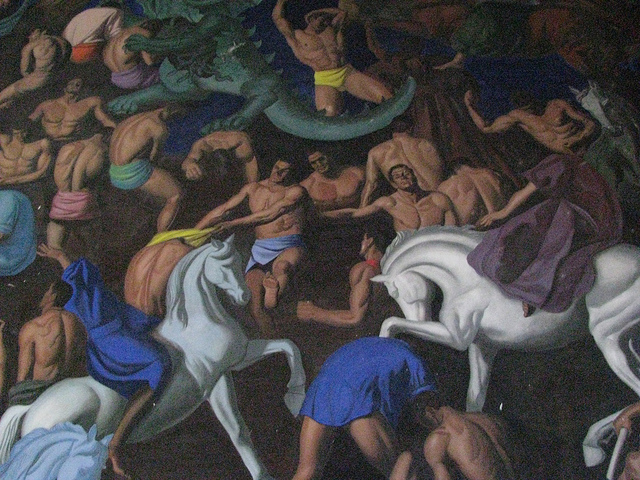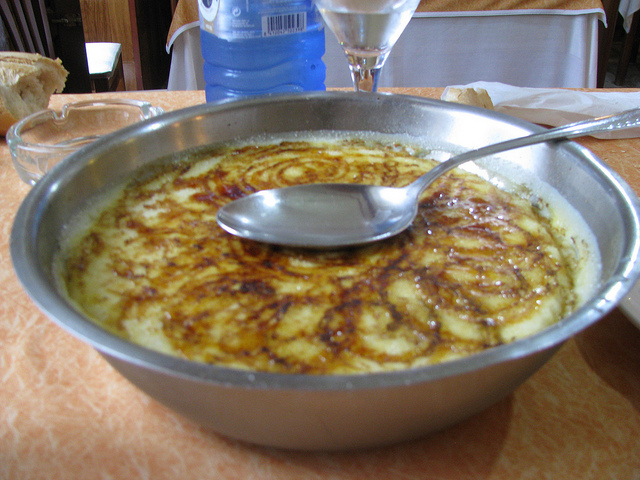My day began with a nice breakfast overlooking the town of Cangas de Onís, a pretty town of about 6700 people that is embedded in the Picos de Europa region in the northern Spanish province of Asturias. I was staying at the Hotel La Cepada whose elevated location on a hillside provides amazing views over the town below. The weather had cleared up since yesterday and fortunately the rain had stopped.

A great view from the Hotel La Cepada
Just after 9 am my local expert guide, Juan Feliz, came to pick me up. Juan runs a local outdoor adventure company called www.fronteraverde.com which offers all sorts of activities, from canoeing and canyoning on the Sella River, to hiking, trekking and caving. Recommended by Turismo Asturias, he was the perfect guy to introduce me to the Picos de Europa, the limestone mountain chain that runs along northern Spain.

Juan Feliz, my adventure guide for today, on the Roman Bridge of Cangas de Onís
We began with a walk through the town of Cangas de Onís, which was the capital of the Kingdom of Asturias until 774 AD. In nearby Covadonga, Christian forces under Don Pelayo won a critical battle over the Moors, which triggered the start of the Reconquista, the Christian reconquest of Spain from its Muslim invaders. Our first major sight as we walked into town was the “Puente Romano”, the Roman bridge over the Sella River, which actually was built during medieval times. The bridge is a rather unusual structure, with its large arch that culminates in a triangular peaked walkway, and four smaller arches. A Christian cross is suspended from the highest point of the arch of this designated Historic Artistic Monument.

The Roman Bridge in Cangas de Onís
During our stroll into town Juan told me a bit more about himself. His entire family is from this area, but Juan, given his adventurous spirit, has lived in Madrid, Oviedo, France, Germany and even Pensacola, Florida. After completing a university degree and all his international travels, he moved back to Arriondas where together with his father, he decided to open an outdoor adventure company in 1999. Today about 70% of his clientele comes from different parts of Spain while about 30% come from other parts of Europe, the United States and Canada. He added that North Americans have been coming here for a long time.

The parish church of Cangas de Onís
We had now reached the main square of Cangas which is anchored by an attractive church and a big statue of Don Pelayo, the local hero who defeated the Moors. On the main street we walked by a miniature model of the Picos de Europa mountain chain and Juan explained all the different peaks and valleys to me. In some of the gorges there is an altitude difference of 2000 metres between the river and the mountain. The Picos de Europa are definitely a magical destination for any outdoor enthusiasts.

Don Pelayo stands guard on the main square of Cangas de Onís
Juan also took advantage of our walk to introduce me to some of the gastronomic specialties of Asturias. We walked into an attractive store called “La Barata” that carries a variety of typical Asturian food items. Since its inception in 1934, La Barata has been one of the most popular specialty grocery stores in Cangas.

An antique cash register at La Barata
The store carries a variety of local beans (a key ingredient in the famous Asturian bean stew called “fabada”), a wide range of Asturian cheeses, different varieties of cider (the regional drink of Asturias), sausages as well as a selection of local cookies, candy, honeys, jams, spices and condiments. All the local Asturian delicacies are on offer here at La Barata.

Lots of different Asturian cheeses are available at La Barata
After our explorations in Cangas Juan and I drove up into the mountains where we parked the vehicle and walked for about 20 minutes on a forested pathway to the La Molina River. This is the starting point for the canyoning experiences that Fronteraverde offers. I have never gone canyoning, so I did not have a clear idea of what’s involved here. But it basically entails rappelling down to the river and from that point forward could involve swimming, walking, scrambling and climbing through the narrow, rocky river valley. A wet suit is a necessity for this activity.

Juan takes me on a hike to the La Molina River
Today we opted for a softer type of adventure as we hiked back up from the river which gave me a chance to find out more about Juan Feliz. During the downtime in his business in the winter, he actually loves to travel himself and has been to the Philippines, and more recently to Mozambique where he worked on an ecological resort. This winter he went to Andalusia in southern Spain which offers much warmer temperatures than the north of the country. Juan is an adventurer through and through!

Great nature experiences await in the Picos de Europa
